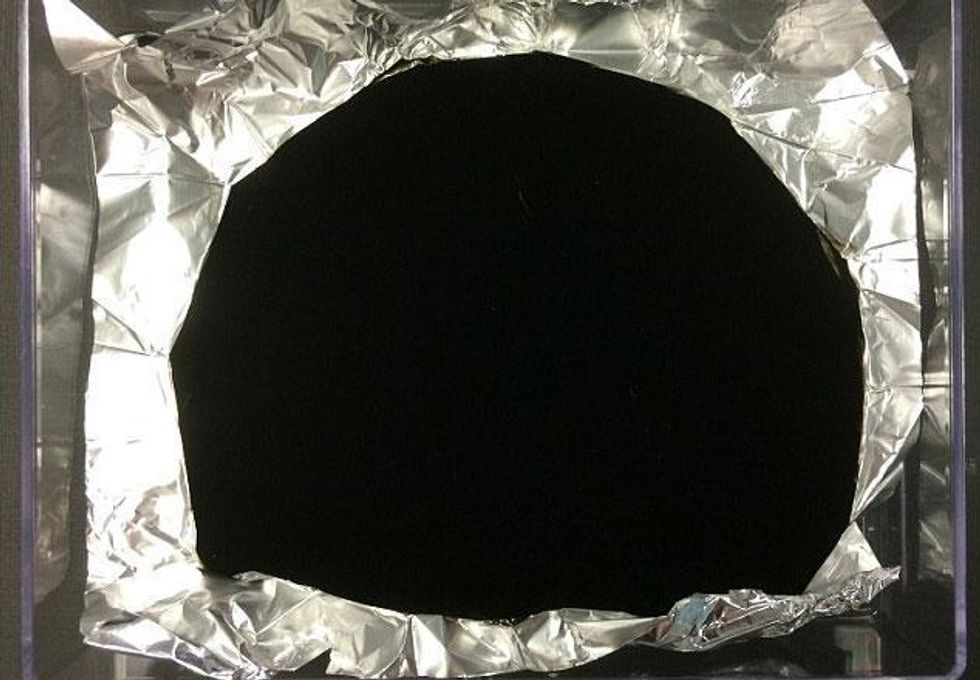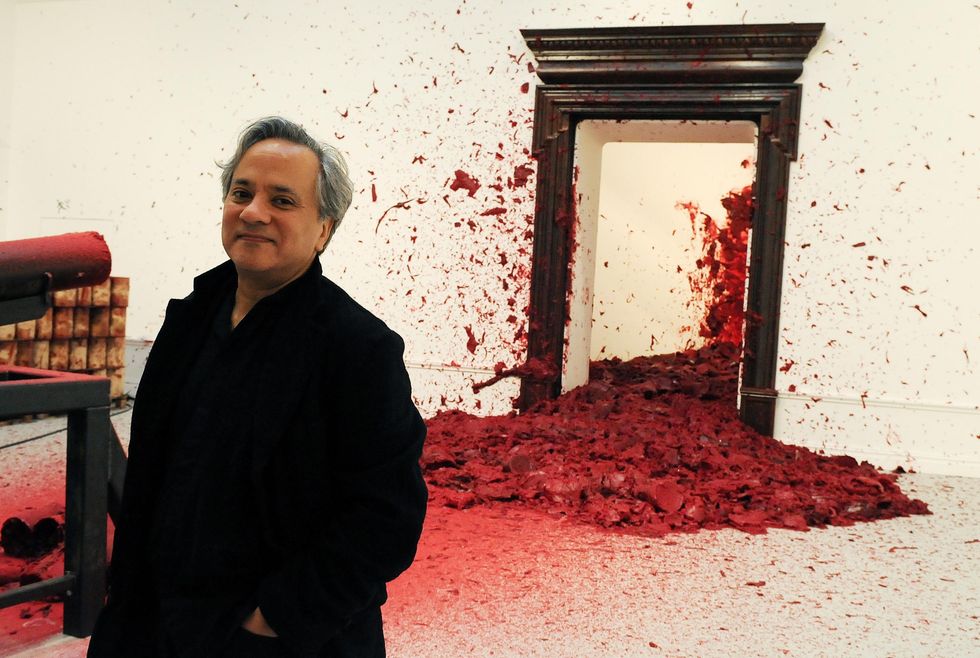
Artist Anish Kapoor, who is an internationally renowned British-Indian sculptor, acquired the exclusive rights to a pigment called Vantablack.
Developed by Surrey NanoSystems, it is made up of a series of microscopic vertical tubes; and when light hits the colour, it doesn’t bounce off as is the case with regular colours and instead it becomes trapped.
Nearly all of the light is swallowed up - 99.6 per cent to be exact - creating the darkest substance yet known.

Kapoor, who also designed the 2012 Olympics' Orbit Tower, has been working with the colour for over two years, and told The Guardian that what had attracted him to the colour was his fascination with ‘void forms’.
In collaboration with NanoSystems, Kapoor has been working towards creating art with the substance, which is proving difficult because of the particular way it is manufactured: only two square centimetres can be made at a time, and both he and the scientists are hoping to manufacture the colour in bulk.
But many people - both in the art community and the public at large - criticise his monopoly over the use of the colour.
Russell Elliott, who represents artists in the UK and the rest of the world, told the Telegraphearlier this year:
Rather like Christian Furr, I haven't heard of any artist who has previously been granted a monopoly on a particular colour before, and it does seem to set an unfortunate precedent. Previously, companies have stipulated the pantone reference in their logo guidelines and this has become standard practice.
Kapoor has attempted to address his critics:
Why exclusive? Because it’s a collaboration, because I am wanting to push them to a certain use for it. I’ve collaborated with people who make things out of stainless steel for years and that’s exclusive.
Kapoor’s fascination with colour and emotion is prevalent in his work, and he previously used the colour red expansively in an installation called ‘Shooting into the Corner’ at the Royal Academy of Arts in London.

HT Guardian
More from the Independent: Blackest is the new black: Scientists develop a material so dark that you can't see it...













